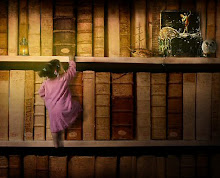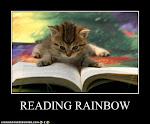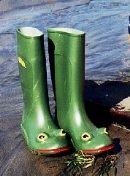If I come across one more "adult" book in which someone finds a mysterious book of fairy tales that sets them on a path to unravel a mystery from the past that will change their life, I am going to SCREAM.
I feel like Mysterious Books of Fairy Tales have become the attic in the suitcase, the trope that keeps getting used over and over to propel and organize a protagonist's quest to discover The Truth About Her Past, Her Family and Herself. The writers who use this always feel compelled to include several of the fairytales, bracketed somehow in the story, and the fairytales are usually nowhere near as mysterious or interesting as the writer or protagonist think. John Connolly has some good fairytale usage in The Book of Lost Things, and Diane Setterfield uses them well also in The Thirteenth Tale. But in each the authors are working with at least partly extant fairytales, not inventing them wholesale (and gods, the inventions! dark forests, mysterious men, forlorn little girls, blah blah blah blah). Pan's Labyrinth, of course, also uses a book of fairytales to marvelous effect. And then, of course, there are The Tales of Beedle the Bard, which serve quite a good purpose and somehow fit into the book in which they first appear.
But most of the books I come across that include Mysterious Unpublished Fairy Tale Books are pretty thin. Often, I flip through them and decide against even checking them out of the library. I tried - I tried hard - with Kate Morton's Forgotten Garden, but it just screams with every cliche imaginable. I couldn't get through it.
It feels cheap, to me, for adult authors to keep returning to the well of Old Fairy Tales, over and over, as if just by referencing them, some important childhood touchstone is reached. Like suddenly the narrative acquires a mystery and profundity by dipping into the realm of Fairy Tale. When in fact, most fairytales (if you read Grimm's or Perrault's, anyway) are rather prosaic, in a way, highly moralistic and often rather grisly (see for example "The Juniper Tree" in any collection of Grimms' Fairy Tales). The child/childhood + fairytales = MYSTERY!!!!!!!!!!!!!! formula that these writers keep reaching for is just tired. It relies on some boring assumptions about both childhood and fairytales and in its way, is as bad as the nostalgic myth of childhood innocence. And fairytales are already so freighted with their own metaphorical and historical weight, adding a new layer into a new work of fiction often just tips the scales way too far. You need a very, very deft touch as an author to pull this off (Setterfield and Connolly both do this, I think), but it takes a very skilled writer to do so, and one with a real sense of the scope of literature - including that too-easily-ignored field of children's literature.
So - writers! find a new trope, and leave the fairy tales alone. Unless, of course, you happen to be Mother Goose herself.
Sunday, July 25, 2010
Wednesday, July 21, 2010
Owl Post
received this in my mailbox today:
A good friend of mine lives in central florida, and has, evidently, invested in annual passes so she can hang out in Hogsmeade regularly. this pleases me inordinately.
I'm a fan of Harry Potter, less so than I used to be, but still quite a fan. Even more, I'm a fan of immersive theme parks; even more still, I'm a fan of ephemera and mail (it's no coincidence that one of my favorite "grownup" books is The Crying of Lot 49).
I'm delighted that Owl Post is a thing one can do at the Wizarding World of Harry Potter. Hogwarts stamp, and a Hogsmeade/Owl Post postmark and everything. And the postmark design is, to my mind's eye, just about perfect.
The flip side of the envelope is almost as awesome. I love the ink-print that gives the effect of a wax seal; it's a clever touch and I love it. The stationery inside mimics school paper: it's got the multicolored Hogwarts coat of arms on it, and the Hogwarts School of Witchcraft and Wizardry text, along with the image of the castle and what seems to be a hippogriff (only the head and neck are visible). It's pretty fantastic, and refrains from heaps of self-promotion or cheap jokeyness. The reverse of the stationery does say WIZARDING WORLD OF HARRY POTTER Universal Orlando Florida, but it's in quite small print at the foot of the page. I appreciate this and approve of it; it's part of that immersive theming I mentioned earlier (which, in a nod to my dissertation, I must say originated with Disneyland, which celebrated its 55th birthday on 17 July).
Just receiving this bit of Owl Post has piqued my interest in seeing the park for myself; I was interested before, but in a very lazy sort of way: "I'd like to go sometime, I guess." Now, I feel more of an urgency: "I need to go see this, soon!" So Owl Post is perfect advertising, too.
A good friend of mine lives in central florida, and has, evidently, invested in annual passes so she can hang out in Hogsmeade regularly. this pleases me inordinately.
I'm a fan of Harry Potter, less so than I used to be, but still quite a fan. Even more, I'm a fan of immersive theme parks; even more still, I'm a fan of ephemera and mail (it's no coincidence that one of my favorite "grownup" books is The Crying of Lot 49).
I'm delighted that Owl Post is a thing one can do at the Wizarding World of Harry Potter. Hogwarts stamp, and a Hogsmeade/Owl Post postmark and everything. And the postmark design is, to my mind's eye, just about perfect.
The flip side of the envelope is almost as awesome. I love the ink-print that gives the effect of a wax seal; it's a clever touch and I love it. The stationery inside mimics school paper: it's got the multicolored Hogwarts coat of arms on it, and the Hogwarts School of Witchcraft and Wizardry text, along with the image of the castle and what seems to be a hippogriff (only the head and neck are visible). It's pretty fantastic, and refrains from heaps of self-promotion or cheap jokeyness. The reverse of the stationery does say WIZARDING WORLD OF HARRY POTTER Universal Orlando Florida, but it's in quite small print at the foot of the page. I appreciate this and approve of it; it's part of that immersive theming I mentioned earlier (which, in a nod to my dissertation, I must say originated with Disneyland, which celebrated its 55th birthday on 17 July).
Just receiving this bit of Owl Post has piqued my interest in seeing the park for myself; I was interested before, but in a very lazy sort of way: "I'd like to go sometime, I guess." Now, I feel more of an urgency: "I need to go see this, soon!" So Owl Post is perfect advertising, too.
Sunday, July 18, 2010
comparative YA
I'm bingeing on YA novels this week, in a mad effort to read, or re-read, everything in order to plan my syllabus and get my book order submitted for my Representing Adolescence class. It's very hard to decide how one wants to represent Representing Adolescence, and I have far more ideas than I do weeks in the semester. Winnowing out, and developing some coherence from what remains, is the real challenge.
I just finished The Secret Diary of Adrian Mole by Sue Townsend, which is and is not a YA book, but certainly does represent a certain kind of adolescence. I enjoyed the book but don't plan teaching it; other considerations aside, I know my students would just fall apart at all the British slang (and this despite the American edition "glossary" in the back of the book).
Not much to say about Adrian Mole at the moment except the experience of reading it was very like my experience of reading The Curious Incident of the Dog in the Night-time. The britishness, yes, the split-parents sideplot, but more than anything, the painfully naive narrators. Any book where the reader knows more than the narrator - or rather, understands more than the narrator - is both endlessly fascinating to me, and intensely painful. it makes me feel dreadfully sorry for the narrators, because it's so clear that they don't get what's going on, and everyone else around them does. And so the narrators become unwitting butts of every joke imaginable.
Cringe-worthy and empathy-inducing. But still good, and fascinating, because of all the codes and nuances that the reader must be able to decipher to produce the effect of the unknowing narrator. These kinds of books are maybe the clearest example, to my mind, of the way that both author and reader construct the novel - because the effect of the book depends on the reader knowing more than the narrator. If she doesn't, if she and the narrator are precisely in the same place, then the book is entirely different.
amazing, amazing. But now I have to scurry into reading some girlie girl books - I have The A-List and The Boyfriend Book on tap. I'm learning an awful lot about YA and gender: books with boy protagonists are all about the boy protagonists; books with girl protagonists are all about boys, in one way or another. This is obviously not an absolute, brightline categorization; but it does seem to be an awfully substantial trend. We'll pick it apart in class. I'm so excited about teaching this class it is almost pathetic.
I just finished The Secret Diary of Adrian Mole by Sue Townsend, which is and is not a YA book, but certainly does represent a certain kind of adolescence. I enjoyed the book but don't plan teaching it; other considerations aside, I know my students would just fall apart at all the British slang (and this despite the American edition "glossary" in the back of the book).
Not much to say about Adrian Mole at the moment except the experience of reading it was very like my experience of reading The Curious Incident of the Dog in the Night-time. The britishness, yes, the split-parents sideplot, but more than anything, the painfully naive narrators. Any book where the reader knows more than the narrator - or rather, understands more than the narrator - is both endlessly fascinating to me, and intensely painful. it makes me feel dreadfully sorry for the narrators, because it's so clear that they don't get what's going on, and everyone else around them does. And so the narrators become unwitting butts of every joke imaginable.
Cringe-worthy and empathy-inducing. But still good, and fascinating, because of all the codes and nuances that the reader must be able to decipher to produce the effect of the unknowing narrator. These kinds of books are maybe the clearest example, to my mind, of the way that both author and reader construct the novel - because the effect of the book depends on the reader knowing more than the narrator. If she doesn't, if she and the narrator are precisely in the same place, then the book is entirely different.
amazing, amazing. But now I have to scurry into reading some girlie girl books - I have The A-List and The Boyfriend Book on tap. I'm learning an awful lot about YA and gender: books with boy protagonists are all about the boy protagonists; books with girl protagonists are all about boys, in one way or another. This is obviously not an absolute, brightline categorization; but it does seem to be an awfully substantial trend. We'll pick it apart in class. I'm so excited about teaching this class it is almost pathetic.
Subscribe to:
Posts (Atom)





